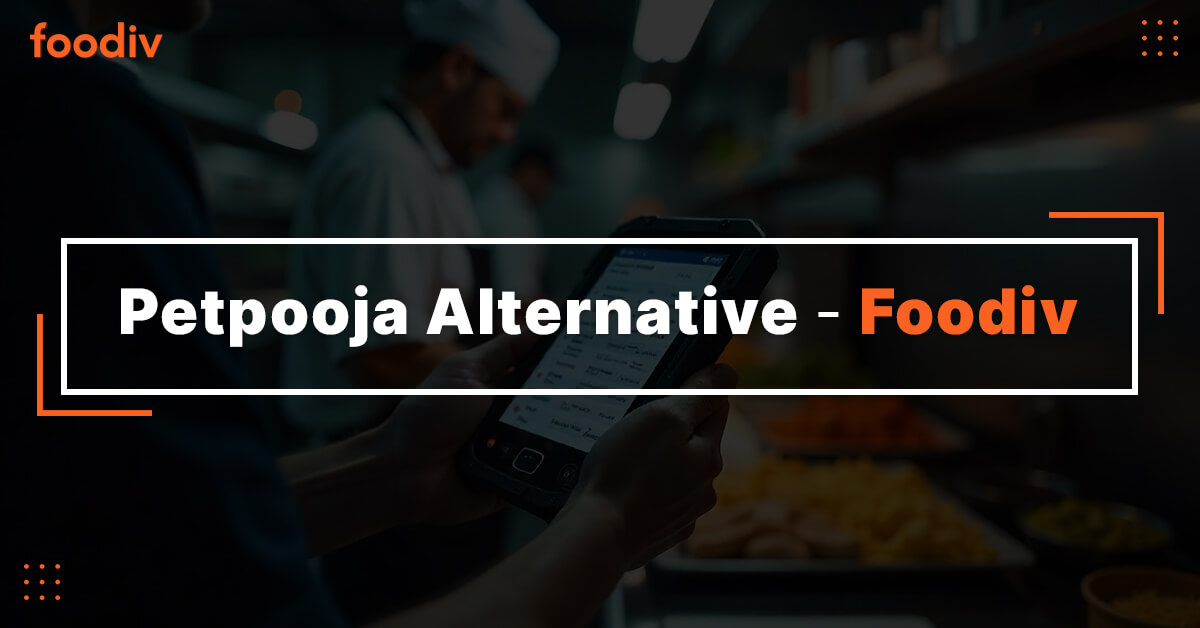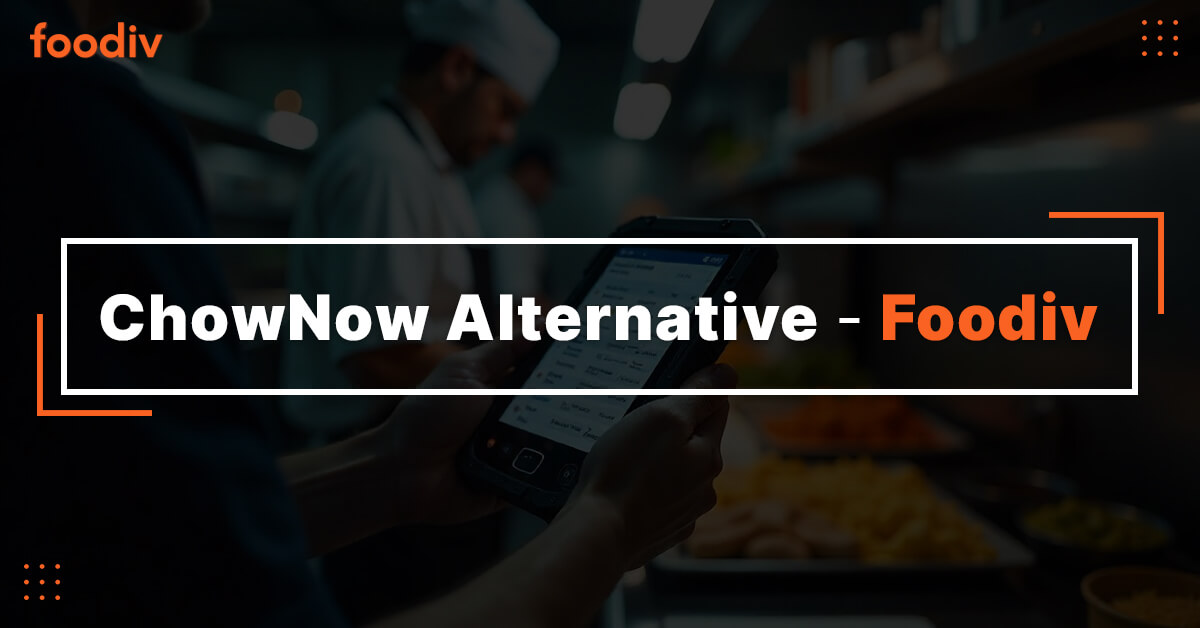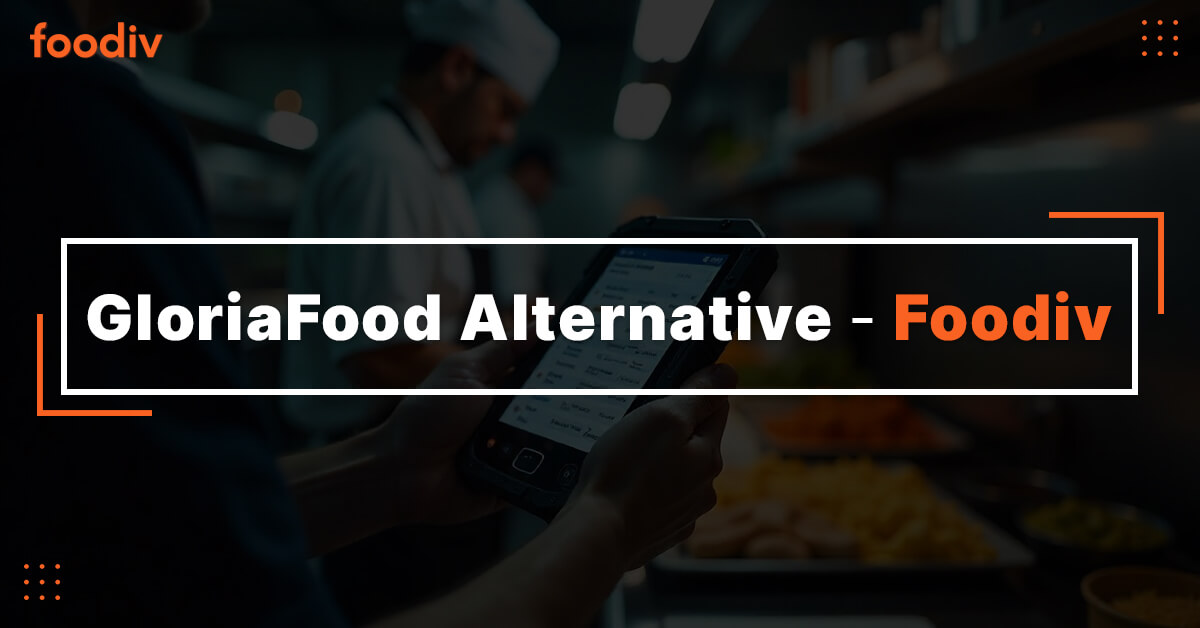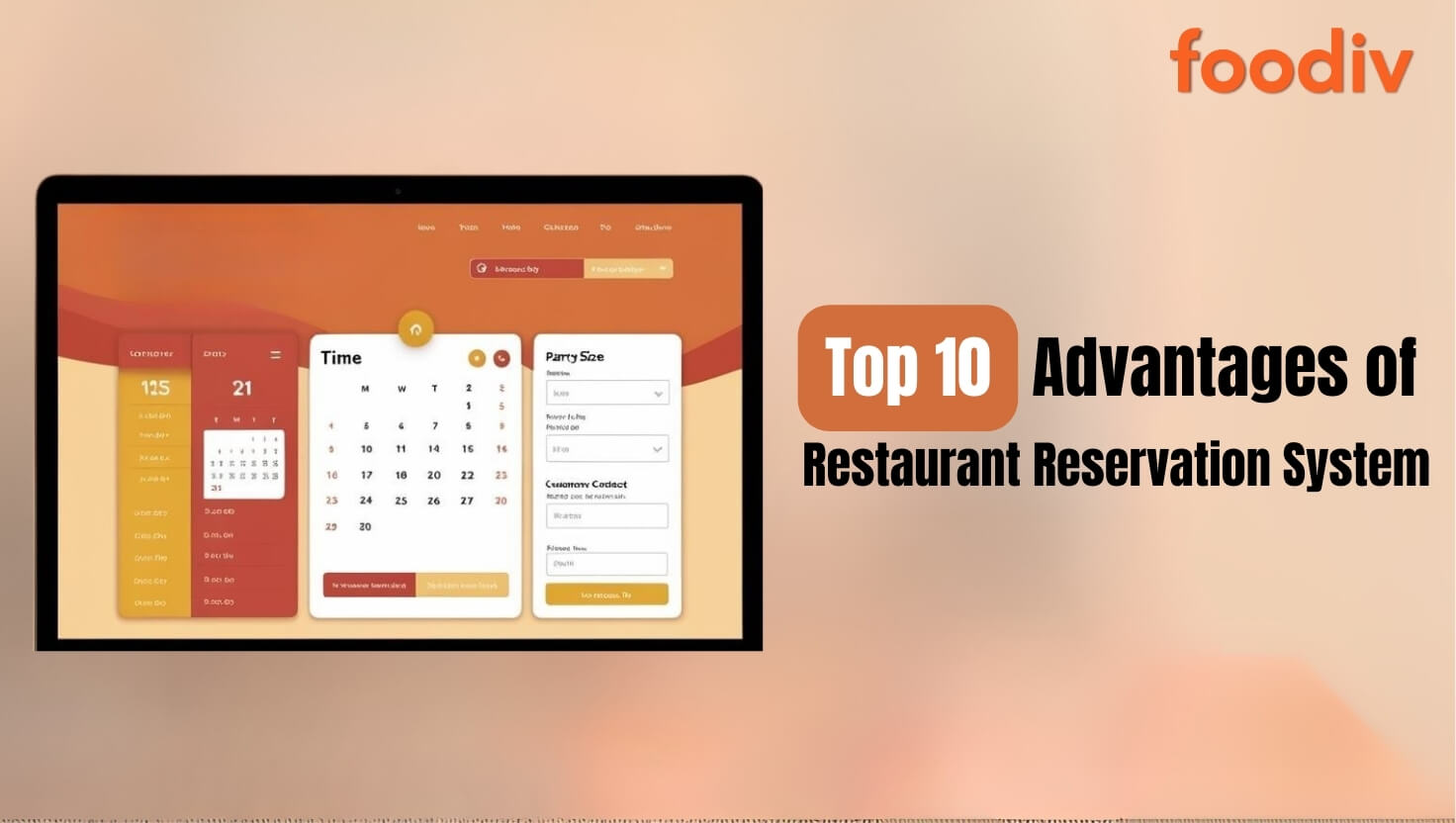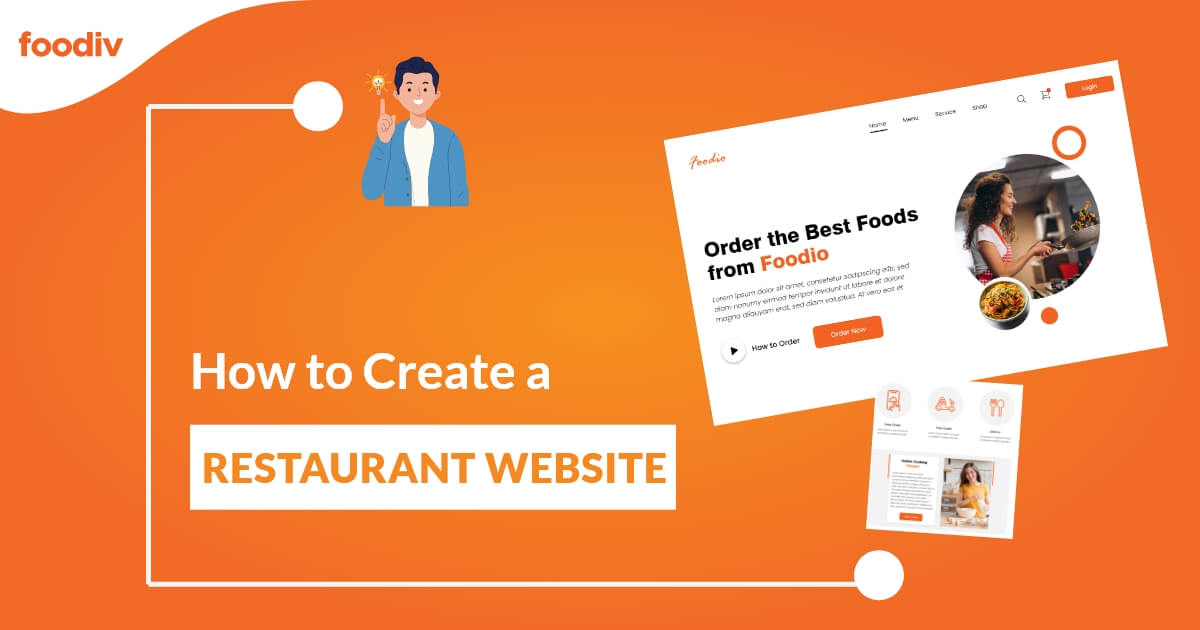
Quick Summary: A website is crucial for every business and is the backbone of restaurants. So, are you considering building a restaurant website? Do you know what it takes to create a website for a restaurant? This article will help you with how to make a website.
A website is essentially the digital storefront of your restaurant if you’re looking to reach customers beyond your local area. It is more than just an online presence, it’s a tool that helps potential diners find you, learn about your menu, place orders, make reservations, and even handle payments. In short, it’s a vital part of your restaurant’s growth strategy.
After reading the article, you will understand why and how to create a restaurant website from scratch. Let’s explore;
Why Create a Restaurant Website
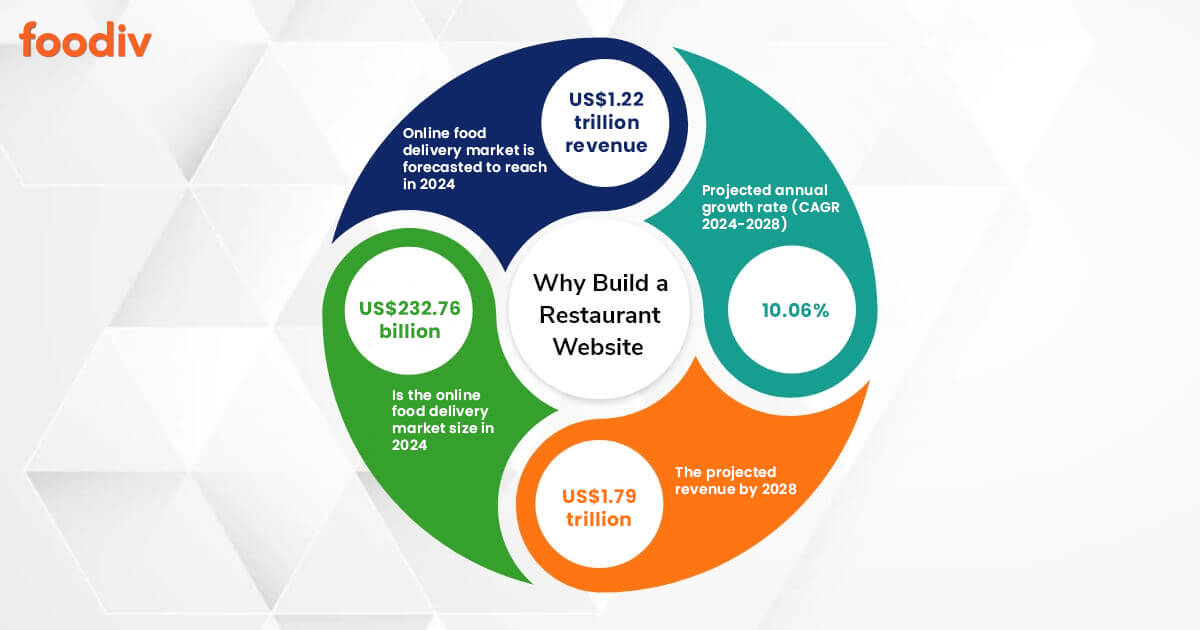
Fun Fact: 90% of Consumers Visit Restaurant Websites Before Choosing Where to Dine.
First; if you wish to run a restaurant or a successful restaurant business in the 21st century, you need to adopt digital transformation. We mean a website that represents you and your business the way you want.
Without having to spend money on additional marketing, a website enables you to represent who you are to your potential and current consumers. In addition, customers will clearly understand the experience the restaurant delivers and the ambiance they may anticipate.
Apart from these, here is how having a website can benefit your restaurant
- You can present yourself the way you want to appear
- Consumers can easily find you and use your services
- You can allow your customers to book tables and choose a dish from the digital menu with an online reservation
- You can offer takeaways to enhance sales
- Allow customers multiple payment options
How to Make a Website for a Restaurant?
Yes, this guide is all about helping you build a robust and customized restaurant website. However, you need to find an expert who will help you through the whole process, as you may not be able to understand every nitty-gritty of web development. So, let’s explore how to build a website for your restaurant.
Step 1: Know Your Clientele
- Who do you want to prepare food for?
- Or, Who will eat your food?
This should be your first question.
Knowing your clientele is essential for a restaurant business because it helps you understand your customers’ needs and preferences. This, in turn, can help you to tailor your menu, pricing, design, and create restaurant marketing strategies to serve better and attract your target audience. This can lead to increased customer satisfaction and loyalty, which can help to drive restaurant sales & profitability.
Make Informed Decision: Additionally, understanding your clientele can help you make informed decisions about your business’s overall direction and development, such as identifying opportunities to expand your offerings or target new customer segments.
Create a Suitable Ambiance; Keep in mind that design isn’t just about how something looks; it’s also—and perhaps more crucially—about how it functions. Our recent article on restaurant interior design will solve the puzzle in detail because every aspect of how it functions should also take your audience into consideration.
Step 2: Set Goals-Why You Want to Build a Restaurant Website
The goals and purpose of a restaurant website are to provide information about the restaurant to potential customers. For example, you can facilitate online table reservations & booking or takeout orders, and to promote the restaurant and its offerings to a broader audience. Some specific goals and purposes of a restaurant website might include the following:
- To showcase the restaurant’s menu, pricing, and location.
- To provide contact information and operating hours.
- To highlight any special promotions or events.
- To allow customers to make reservations or place takeout orders online.
- To share news and updates about the restaurant, such as new menu items or staff changes.
- To promote the restaurant’s brand and overall dining experience.
- To provide a platform for customer reviews and feedback.
- To drive traffic to the restaurant’s physical location.
Step 3: Define Budget, Timelines, and Available Resources
Before building a restaurant website, it’s essential to define the budget, timeline, and available resources that you have to work with. This will help you make informed decisions about the scope and scale of your website. Besides, it will also help prioritize your efforts in a way that maximizes the return on your investment.
Here are a few specific things to consider when defining your budget, timeline, and resources:
Budget: Determine how much money you have to invest in your website, and allocate your funds accordingly. Consider factors such as website design and development costs, hosting fees, and ongoing maintenance expenses.
Timeline: Consider how much time you can devote to building and maintaining your website. This will help you plan your project timeline and determine the complexity level you can realistically manage.
Resources: Identify the resources that you have at your disposal, such as in-house staff or external contractors who can help with website design, development, and content creation. Consider factors such as technical expertise, creative skills, and available bandwidth.
Step 4: Choose a Platform
You can use several platforms to build a restaurant website, each with its own set of features, capabilities, and costs. Some popular options include:
- Website builders: These online platforms offer pre-designed templates and drag-and-drop tools to help you create a website without knowing how to code. Examples include Wix, Weebly, and Squarespace.
- Content management systems (CMS): These platforms allow you to create and manage website content through an easy-to-use dashboard interface. Popular CMS options include WordPress, Drupal, and Joomla.
- Custom development: If you have the budget and technical expertise, you can hire a developer or agency to create a custom website from scratch. This can give you more control over the design and functionality of your site, but it may be more expensive and time-consuming than other options.
- Using Foodiv: If you’re looking for a solution designed specifically for restaurants, Foodiv’s restaurant website builder is a great option. It allows you to easily create your own website, with online menus and ordering options. It gives you the tools to manage your restaurant’s online presence efficiently, all in one platform.
When choosing a platform to build your restaurant website, consider factors such as your budget, technical skills, and the specific features and functionality you need, it may also be helpful to review online reviews and compare the pros and cons of different platforms before making a decision.
Step 5: Create Brand Assets or Marketing Materials for Digital Use
Brand assets are visual marketing materials that represent your restaurant’s identity and values and are used to promote your brand online and offline. Some examples of brand assets that you may want to create for digital use;
Logo: A unique and visually appealing logo is crucial to your brand identity and should be used consistently across all your online and offline materials.
Brand color palette: Choose a set of colors that reflect your brand personality and are used consistently across your digital materials.
Brand font: Select a legible and visually appealing font, and use it consistently across all of your digital materials.
Imagery: Choose high-quality images that reflect your brand and can be used on your website and social media channels.
Brand guidelines: Create a set of guidelines that outline how your brand assets should be used, including details such as logo placement, color palette, and font usage.
A strong and consistent set of brand assets is essential for building recognition and trust with your customers and establishing your brand’s online presence.
Step 6: Build your Restaurant Website
When everything is ready, you may start building your website. Enjoy it and get input from your friends, family, and coworkers. Spend some time analyzing the websites of various restaurants to determine what you like and dislike. To avoid making many adjustments later, do this before committing to a template. Here’s our suggestion on how to get started.
Build a Restaurant Website Design
Designing your restaurant website is about more than just looks, it’s about functionality, flow, and setting the tone for the customer experience.
Hero section
A hero section on a restaurant website is crucial because it provides an opportunity to make a solid first impression on potential customers and showcase your restaurant’s key features and benefits. The hero section is often the first thing visitors see when they land on your site, so making it as engaging and effective as possible is essential.
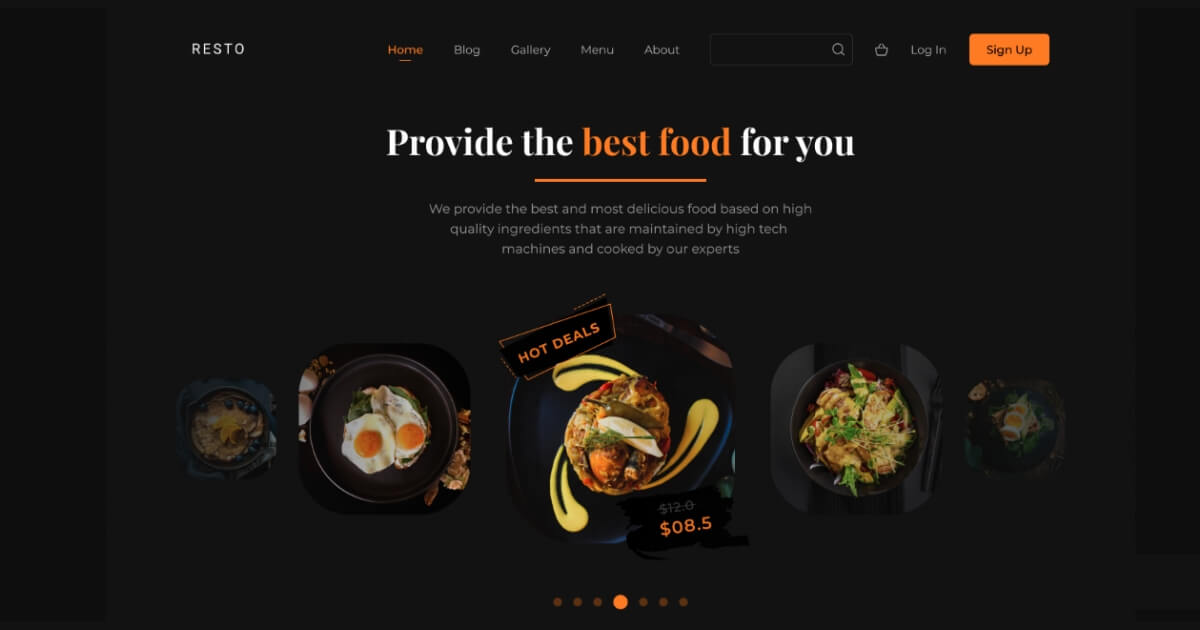
Image Source: Dribbble
Why a hero section can be helpful for a restaurant website:
- To highlight your restaurant’s unique selling points: Use the hero section to showcase what makes your restaurant stand out from the competition, such as your delicious food, beautiful setting, or exceptional service.
- To drive conversions: Use the hero section to guide visitors towards taking a specific action, such as making a reservation or ordering takeout. Make sure to include a clear and compelling call to action.
- To set the tone for the rest of the site: The hero section can set the tone and theme for the rest of the website, helping to create a cohesive and cohesive brand experience.
Overall, a well-designed hero section can effectively capture visitors’ attention and encourage them to explore your restaurant’s website further.
About Us
An “About Us” page on a restaurant website is vital because it provides potential customers with information about your restaurant’s history, values, and personality. This helps establish credibility, build trust, and create a more personal connection with your customers.
Why an “About Us” page is essential for a restaurant website:
- To introduce your restaurant: An “About Us” page allows you to present your restaurant to potential customers and share your story and unique personality. This can help to differentiate your restaurant from the competition and create a more memorable experience for your customers.
- To build trust: An “About Us” page can help to build trust with potential customers by providing transparency about your restaurant’s history, values, and team members. This can establish credibility and encourage people to dine at your establishment.
- To provide a personal touch: An “About Us” page allows you to share more personal information about your restaurant and its team, which can create a more authentic and relatable experience for your customers.
In short, an “About Us” page can effectively connect with your customers and build a more substantial brand presence online.
Contact us
“Contact Us” is about letting your users know where you are and how to contact you. You make it creative and easy to contact. For example,
- For quicker contact, include links to your social media accounts.
- A call to action to the “book table”, “place order”, “call”, etc. might also be added here.
Create a Restaurant Website Menu
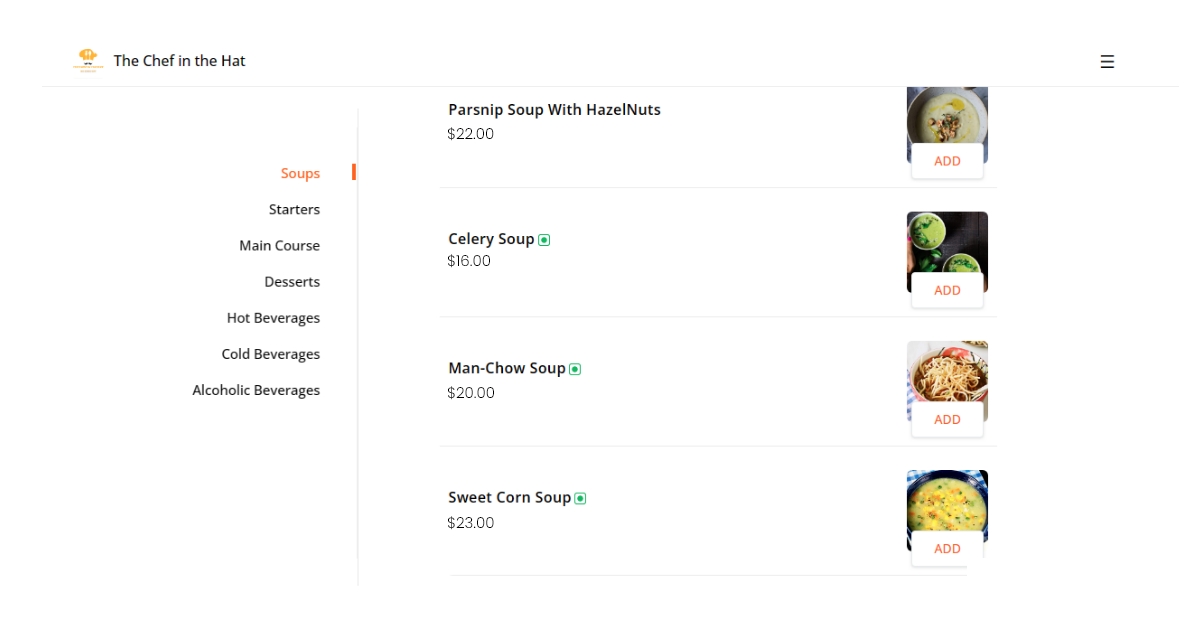
Your menu is one of the most important elements of your restaurant’s website. It not only informs customers about your offerings, but it can also help increase sales. This can attract new customers and drive business to your restaurant, as people often want to see what kind of food is offered before deciding where to dine. If you are running dining facilities, you can create a digital menu and allow your visitors to explore the menu using their smart devices and place an order from the comfort of their chairs. Making the menu online makes it clear what you are serving to the reader.
Set Up Online Ordering
Setting up an online ordering system is no longer just a convenience—it’s a necessity for modern restaurants. An efficient online ordering system can streamline your operations, improve customer experience, and increase revenue.
Here’s why it’s essential for your restaurant:
- Increase Sales: Customers can easily place orders for takeout or delivery directly from your website.
- Boost Customer Satisfaction: An easy-to-use online ordering system makes it simple for customers to get their favorite dishes whenever they want.
- More Control: You can manage orders, track sales, and adjust your menu in real time.
Setting up an online ordering system is a must in today’s digital world, helping you serve customers efficiently and boost your bottom line.
Get Your Local SEO Right
Once your restaurant website is live, it’s crucial to optimize it for local search engines. Local SEO (Search Engine Optimization) helps ensure that people in your area can easily find your restaurant when searching for dining options.
Here’s why local SEO is essential for your restaurant:
- Increase Visibility: Local SEO helps your restaurant show up in search results when people are looking for dining options near them.
- Attract Targeted Traffic: When optimized correctly, your website can attract more relevant visitors who are actively searching for restaurants like yours.
- Enhance Customer Engagement: Local SEO not only drives traffic but also encourages online reviews and social media engagement, which can improve your online reputation.
Complete Guide: How Much Does it Cost to Build A Food Delivery App
Final Thoughts
We hope this guide will help you create the restaurant website that you want. You can also contact us if you want to get detailed information on how to create a restaurant website and how we can help you.
Foodiv provides a SaaS-based online food ordering system to clients worldwide. The off-the-shelf system is designed to suit every specific need of modern restaurants, hotels, cafes, and more. The food ordering website we provide is cost-effective and feature-rich, which can serve your comprehensive needs on-premises and online. Let’s connect today to learn how it works.


